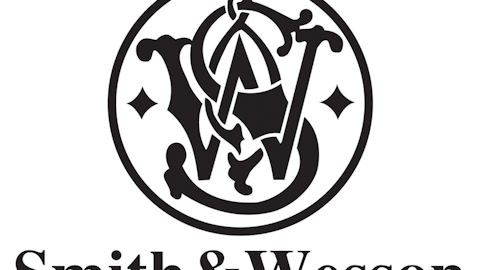Auto sales reported in last week’s retail sales figures showed higher vehicle sales in 2012 compared to 2011, with Ford (NYSE:F) and General Motors (NYSE:GM) taking the lead in the U.S. market while Toyota (NYSE:TM) nearly tied Ford in domestic sales. The industry as a whole saw sales of about 14.4 million units, which was 13% higher than 2011 sales (Look at which auto manufacturer we’re betting on).
A rising trend in auto sales is definitely good news for tire manufacturers. Looking at the period between 2008 and 2011, General Motors had a 4.4% average annual decline in sales, compared with Toyota (-8.3%) and Ford (-5.8%). Between 2009 and 2011, GM’s revenue is actually up slightly at 0.3%, while Ford and Toyota are still slightly in the red. Going further, focusing just on 2011 over the previous year’s total, GM is up almost 20%, Ford is up 7.2%, and Toyota sales are down around 1%. Thus, the takeaway here is really that auto sales are clearly on the rise. Let’s pop the hood on two tire manufacturers that could benefit from this trend (Find out which 2013 vehicles mean the most to GM and Ford).
Cooper Tire & Rubber Co. (NYSE:CTB) and Goodyear Tire & Rubber Co. (NASDAQ:GT) are the two contestants under review. We’ll check out their recent stock performance, then review some financial information and fundamentals to help decide which one you might want parked in your portfolio.
Cooper Tire’s stock led the two in 2012 with a whopping 76% return for investors. That was after their stock took a 41% fall in 2011. But an investor who bought the stock at the beginning of 2011 would still be up 9.7% today (over 12% after dividends) if they held through the large decline. Goodyear edged 5.2% lower in 2012 after rising 18% in 2011, providing about a 15% return to-date.
Cooper Tire’s shares currently pay a 10.5-cent quarterly dividend (1.6% yield), while Goodyear does not offer investors a payout at the moment. Cooper Tire’s low P/E ratio of 4.64 may look most attractive from a value standpoint, while Goodyear’s P/E ratio is currently 17.94, notably higher. Cooper certainly looks like a cheap stock offering a good dividend, but let’s run over each company’s financials to help reach a decision.
Goodyear grew sales 20.8% between 2010 and 2011. If analyst estimates are met, 2012 revenue would show a decline of about 6.5%. Cooper Tire, meanwhile, grew sales by 16.8% over the same period and will grow revenue by about 6% if actual results come in line with current forecasts. Goodyear and Cooper both carry a large amount of debt on their balance sheets, so we should also consider that Moody’s current credit rating for Goodyear is Ba3, slightly better than Cooper Tire’s B1 credit rating.
Comparing operational performance, both companies reported impressive quarterly 2012 EBITDA to-date, with each looking very likely to meet or exceed 2011 full-year EBITDA when 2012 results are officially reported. Goodyear’s EBITDA shrunk in both 2008 and 2009 but grew in 2010 and 2011 (up 62% and 32%, respectively). Cooper Tire’s EBITDA shrunk in 2008 from $275 million down to $33.9 million, before jumping to over $335 million in 2009. EBITDA for Cooper Tires declined just under 1% in 2010 and fell 14% in 2011. Thus, we can see that each company clearly struggled during the recession, but seem to be recovering at a relatively aggressive rate.
What are the conclusions we can draw?
So, we know the following: 1) the auto industry is expanding at a healthy rate; 2) each tire company’s stock has provided similar returns in recent years; 3) revenue is growing steadily for both and 4) EBITDA has been positive the previous 5 years, and it’s relatively stable if you exclude 2008 and 2009.
We also know that both tire companies are saddled in debt that is rated junk status from Moody’s. So which of these stocks should you buy? Or are they even worth buying?
Let’s consider what hedge funds are doing with their Goodyear Tire and Cooper Tire holdings before making a final decision. 13F filings show that, comparing 2Q 2012 to 3Q 2012, three hedge funds added Goodyear Tire to their portfolios, while one hedge fund removed Cooper Tire from its holdings. Of the 400+ hedge funds we track, aggregate Goodyear holdings rose by a little over $7 million, while Cooper Tire holdings fell by close to $11.5 million. Read how you can make money by monkeying hedge funds.
In short, both companies can offer solid returns as the auto industry continues to grow. If I had to pick one of these stocks based on the research above, I would personally prefer to have Goodyear Tire in my portfolio. While Cooper Tire offers a nice dividend yield and sports a low P/E ratio, it’s possible that they deserve a low P/E ratio. Like most things in life, you often get what you pay for, and the same is true for stocks. It is likely that the three hedge funds that added Goodyear to their portfolios last quarter feel the same way.
With a better debt rating than Cooper Tire, a less volatile stock price, and stellar brand recognition, this would be a smart way to capitalize on auto growth in 2013.
For more related coverage, continue reading here:
My Best Bet on the Auto Industry
Has The Ford/GM Run-up Gotten Out of Control?
These Hedge Fund Managers Love Goodyear
Disclosure: I have no position in any of the stocks mentioned






